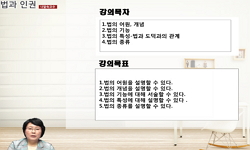이 논문의 목적은 포로 시대 이후에 기록된 제의 장소와 관련된 추가 본문들에서 신명기역사서가 어떻게 전승되고 재해석되었는지를 밝히는데 있다. 신명기역사서에 첨가된 여호수아 8장 30...
http://chineseinput.net/에서 pinyin(병음)방식으로 중국어를 변환할 수 있습니다.
변환된 중국어를 복사하여 사용하시면 됩니다.
- 中文 을 입력하시려면 zhongwen을 입력하시고 space를누르시면됩니다.
- 北京 을 입력하시려면 beijing을 입력하시고 space를 누르시면 됩니다.

바빌로니아 포로 시대 이후 이스라엘에서의 제의중앙화규정: 신명기역사서 이후 역사서에서의 제의중앙화규정의 역할에 대하여 = Cult Centralization of the Post-Exilic Period in Israel: The Role of Cult Centralization in the History after Deuteronomistic History
한글로보기https://www.riss.kr/link?id=A108769572
-
저자
이상원 (장로회신학대학교)

- 발행기관
- 학술지명
- 권호사항
-
발행연도
2023
-
작성언어
Korean
-
주제어
사마리아 ; 산당들 ; 하나님의 사람 ; 제의중앙화규정 ; 신명기역사서 ; Samaria ; high places ; man of God ; cult centralization ; Deuteronomistic History
-
등재정보
KCI등재
-
자료형태
학술저널
-
수록면
182-215(34쪽)
- 제공처
-
0
상세조회 -
0
다운로드
부가정보
국문 초록 (Abstract)
이 논문의 목적은 포로 시대 이후에 기록된 제의 장소와 관련된 추가 본문들에서 신명기역사서가 어떻게 전승되고 재해석되었는지를 밝히는데 있다. 신명기역사서에 첨가된 여호수아 8장 30-35절; 열왕기상 13장; 열왕기하 17장 24-41절; 23장 16-20절과 역대하 13장 4-12절에서는 ‘제의중앙화규정’을 산당제의의 평가 근거로 사용하지 않음으로써 신명기역사서를 전승한다. 또 산당제의를 장소와 관련하여 비판하는 것이 아니라 우상숭배와 불법적 제사장 임명과 관련하여 비판함으로써 산당제의의 의미를 재해석한다. 이를 통해 포로 시대 이후 이스라엘 공동체는 혼합종교 현상과 그리심산 성전 제의라는 자기 시대의 문제를 전승에 기초하여 해결한다.
다국어 초록 (Multilingual Abstract)
1 Kings 13 criticizes the cult in Bethel on the basis of the prohibitions of God and the regulations about the priest. With this text, 2 Kings 23,16-20 strengthens the deuteronomistic tradtion about the Josianic reform which fulfilled the cult centralization. 2 Chr 13,4-12 criticizes the cult in Bethel on the basis of the illegal appointment and delegation of the priest. 2 Kings 17,24-41 makes illegal a specific cult-place in Samaria, namely the YHWH-Tempel on Mt. Gerizim. Also, Josh 8,30-35 aims to delegitimize the YHWH-Tempel on Mt. Gerizim.
According to the deuteronomistic tradition, the only legal cult-place for YHWH ist the tempel of Jerusalem and the regulation of cult centralization was fulfilled in virtue of the Josianic cult-reform. From the Judean pont of view which was based on this tradition the YHWH-Tempel on Mt. Gerizim could not have been accepted. Thus the tempel on Mt. Gerizim which was in competition with the tempel of Jerusalem is described with Bamoth, but is under fire on the basis of the First Commandment and the regulations about the appointment of the priest. Israel in the Persian period upholds and reinterprets the tradition of the Deuteronomistic History in regard to the Bamoth-cult.
The purpose of this article is to explain that the regulation of cult centralization(Dtn 12) no longer plays a key role in the postexilic texts of historical books. For this purpose, this study examines the postexilic texts relating to cult-places (1 ...
The purpose of this article is to explain that the regulation of cult centralization(Dtn 12) no longer plays a key role in the postexilic texts of historical books. For this purpose, this study examines the postexilic texts relating to cult-places (1 Kings 13; 2 Kings 23,16-20; 17,24-41; 2 Chr 13,4-12; Josh 8,30-35). To begin with, the themes of the texts are revealed, while investigating on which grounds the cult places are criticized. Next, it expounds how the tradition of the Deuteronomistic History in which the regulation of cult centralization plays a key role is interpreted in the Persian eras in Israel.
1 Kings 13 criticizes the cult in Bethel on the basis of the prohibitions of God and the regulations about the priest. With this text, 2 Kings 23,16-20 strengthens the deuteronomistic tradtion about the Josianic reform which fulfilled the cult centralization. 2 Chr 13,4-12 criticizes the cult in Bethel on the basis of the illegal appointment and delegation of the priest. 2 Kings 17,24-41 makes illegal a specific cult-place in Samaria, namely the YHWH-Tempel on Mt. Gerizim. Also, Josh 8,30-35 aims to delegitimize the YHWH-Tempel on Mt. Gerizim.
According to the deuteronomistic tradition, the only legal cult-place for YHWH ist the tempel of Jerusalem and the regulation of cult centralization was fulfilled in virtue of the Josianic cult-reform. From the Judean pont of view which was based on this tradition the YHWH-Tempel on Mt. Gerizim could not have been accepted. Thus the tempel on Mt. Gerizim which was in competition with the tempel of Jerusalem is described with Bamoth, but is under fire on the basis of the First Commandment and the regulations about the appointment of the priest. Israel in the Persian period upholds and reinterprets the tradition of the Deuteronomistic History in regard to the Bamoth-cult.
동일학술지(권/호) 다른 논문
-
- 한국구약학회
- 민경구
- 2023
- KCI등재
-
에스겔 8-19장의 구성과 메시지- 백성의 불평과 야웨의 답변을 중심으로
- 한국구약학회
- 김래용
- 2023
- KCI등재
-
하나님의 폭력과 신정론: 구약의 천상의회와 천사론을 중심으로
- 한국구약학회
- 기민석
- 2023
- KCI등재
-
퀴어-페미니스트 시각에서 읽는 호세아서: 낙인과 상처를 넘어 치유로
- 한국구약학회
- 유연희
- 2023
- KCI등재




 KCI
KCI DBpia
DBpia



